Buying Spanish mantillas for a wedding, an image of the Virgin Mary, for a Holy Week procession, ... is a task influenced by a large number of factors: the shape of the mantilla (triangular, half-moon,...), the thread and fabric (silk, chantilly,...), the embroideries, the design of the garment, the price, fashion trends, local tradition, etc. Among that great number of variables, one of the most important is the color of the mantilla.
The < vital>purchase of a mantilla of one color or another conditioned by the protocol of the celebration in which it is going to be worn, the color of the comb, the earrings, the brooch and the dress or suit, the type of hairstyle, if it is a mantilla for a fallera, a mantilla for a wedding (mantillas para esposa or mantillas para novia in spanish), if the mantilla is going to be worn by a girl or a woman, if it is going to be worn to a bullfight, for mourning, etc...
At Catholic Articles Brabander, we are very aware of the importance of color when it comes to selling a Spanish mantilla veil. For this reason, we have tried to reproduce as accurately as possible the tone of the mantillas we have available in our online store.
During the photographing process, we have realized that the mantillas, due to their design and making, being openwork garments, are practically transparent so the color of the material on which the garment rests conditions the tones reflected in the images. If a black mantilla is placed on a white surface, a contrast can be produced that facilitates seeing the garment's design. On the contrary, if we place a black Spanish mantilla on a black background, the thread and filigrees that decorate the mantilla will not be appreciated. For this reason, we have tried to look for surfaces that allow appreciation of the designs of the Spanish mantillas for sale on our website and that, at the same time, allow appreciation of the tones of each of the mantillas.
Whether you want to buy a mantilla for a fallera, for a wedding, or if you're going to buy the mantilla for a Holy Week procession, in our online store you will be able to appreciate all the details of each of the garments. The photography process has been complex, but the work has been worth it. In most of the Spanish mantillas that you can buy in our online store, you will see several photos. The images were taken by placing the garments on different backgrounds to get an accurate idea of the design and the color of the thread used in the making. The backgrounds have been chosen for the contrast concerning the color of the mantilla: white or light backgrounds for black Spanish mantillas veils or dark colors, dark backgrounds for white Spanish mantilla veils, beige or light tones, ...
If you have any questions, before buying a mantilla or a comb, do not hesitate to contact us. We will be happy to help you.
A mantilla is a feminine garment popular in Spain and other countries of Hispanic tradition. Women wear it to cover their heads and shoulders at parties or solemn events.
The mantilla is a garment that can be made in different sizes and shapes. There are rectangular mantillas, triangular mantillas, half-moon-shaped mantillas, etc.
Mantillas can be made from different fabrics. Nowadays, it is common to buy mantillas made of tulle, a fabric that can be made from natural materials such as silk or artificial materials such as rayon and polyester.
Tulle has gained ground over other fabrics because it has characteristics that make it ideal for making mantillas. Tulle is a very light fabric with good drape and movement, is transparent, and serves as a base for ornamentations such as blond or Chantilly lace.
The mantilla originates in the Iberian culture, where women used veils and cloaks to cover and adorn their heads. It is believed that these garments were not properly mantillas as we know them today, but instead cloaks that served to protect women from the weather conditions.
In the Middle Ages, the garment evolved towards a more decorative and ornamental dimension. During this period, more delicate fabrics began to be used. Despite the changes, the mantilla is generally a simple and functional garment.
In the 16th century, the mantilla spread throughout Spain as part of the popular costumes. Each region had its own characteristics according to the climate and social conditions. The first designs with laces appear.
In the 17th century, laces imposed themselves as central elements of the making of mantillas, especially among women of the wealthy classes. The quality of the making of the garment and its ornamentation is associated with the status of the person wearing it.
In the 19th century, the mantilla became a distinctive accessory of the Spanish woman, driven by Queen Isabel II. The queen's death in 1868 marked the beginning of the decline in the use of the garment throughout Spanish geography. However, in some places like Andalusia and Madrid, it continued to be a popular complement among women of all social strata.
In this period of significant political and social changes, the garment was associated with a Spanish symbol, a sign of the defense of the homeland against the new currents and customs that arrived in Spain from Europe. A clear example of this is the event traditionally known as the conspiracy of the mantillas. A peaceful protest gesture in which the distinguished ladies of Madrid society, organized by the Duchess Sofía de Troubetzkoy, decided to defy with mantillas and combs as symbols of resistance against the new kings, Amadeo of Savoy and his wife María Victoria.
In the 20th century, its everyday use was replaced by other garments, being reserved mainly for special occasions. Today, the mantilla is still widely used during the celebrations of Holy Week, the godmothers at weddings, and the falleras during the celebration of the Fallas in the city of Valencia.
The mantilla is a feminine complement widely used in Holy Week celebrations in Spain and many other countries of Hispanic tradition.
Its use is especially notable in the Holy Week celebrations in Madrid and the southern area, in cities like Seville.
Mantillas are worn by women mainly during the liturgical acts and processions that take place during Holy Thursday, Good Friday, and Easter Sunday.
The type of mantillas worn each day and the dress code that women must follow varies from Holy Week to another. It is common for each Easter brotherhood to establish a dress code that women who wish to participate in the procession must follow.
The general rule links the color of the mantilla to the liturgical color of the day the procession takes place. In this sense, during Holy Week, women and girls wear fundamentally black and white mantillas.
The color black represents mourning, solemnity. If it is linked with Holy Week, the black mantillas are a representation of mourning for the Death of Christ.
The celebration of the Death of Jesus on the Cross is one of the most critical moments of the Christian liturgical calendar and one of the central points of the celebration of Holy Week.
Generally, women and girls wear black mantillas during masses, solemn events, and processions of Holy Thursday and Good Friday.
Holy Thursday marks the beginning of the Easter Triduum. The Institution of the Eucharist and the Sacrament of Holy Orders are commemorated on this day. The Chrism Mass and the Evening Mass are celebrated, marking the beginning of the Easter Triduum. During the liturgical celebrations, Jesus' Last Supper with his disciples is remembered.
On Good Friday, we remember the death of Jesus on the Cross to save us. The liturgy includes reading the Passion of Christ and the Adoration of the Cross without celebrating mass.
Just as black represents mourning and death, white represents life and hope.
On Good Friday, we remember the death of Christ; on Easter Sunday, we celebrate the return to life of Our Savior. The liturgical color of Easter Sunday is white. It is a day of joy and rejoicing since Christ returned from the dead to bring light back to the world, symbolism that is represented by the lighting of the Paschal Candle during the Easter Vigil.
Easter Sunday closes the Easter Triduum that began on Holy Thursday.
Women and girls who attend certain solemn acts or participate in the Holy Week processions wear white mantillas.
The godmother of a wedding, generally the mother of the groom, is the person who can wear the mantilla during the celebration of a marriage.
The use of mantilla by the godmother is a very rooted tradition in certain social strata in the south of Spain. The mantilla is a complement used during the liturgical celebration and subsequent banquet. The protocol of matrimonial celebrations indicates that the godmother should not remove the mantilla and comb before the bride removes the veil, usually when the banquet begins.
Generally, the mantilla is used in Catholic ceremonies, but it is not expected to be used in civil marriage celebrations.
The Valencian Fallas is another celebration where mantillas are crucial. The fallera's mantillas are a complement that is part of the traditional fallera costume.
The fallera's mantilla, also known as Alicante's, is half-moon-shaped and usually smaller than the Spanish mantillas used during the Holy Week celebrations or at weddings.
The black mantillas of Holy Week are part of a complete set that women accompanying the floats of a particular brotherhood must wear. As mentioned, the dress code is determined in a particular way by the competent body of each Easter brotherhood. For this reason, if you wish to participate in a procession or accompany one of the Holy Week floats, it is most advisable to contact the Brotherhood to facilitate the dress code details.
Despite the particularities of each of the brotherhoods, in general, the black set that women accompanying a float must meet the following requirements:
The comb is essential to wear the mantilla during Holy Week properly. The comb is a complement to the shape of a tile that is placed on the back part of the woman's head. It is normally held on a low bun that the person must make.
The size of the comb or tile must be proportional to the height of the person wearing it.
Earrings and the necklace are complements that are usually worn by women who procession during Holy Week.
It is recommended that the earrings be made of noble materials such as gold or silver with some aged finish so that they are not too shiny. They can also be pearls or some other precious stone that maintains the sobriety of the set.
The dress must be black, preferably plain and without ornamentation.
The garment must reach below the knees.
It must not have any pronounced neckline in front or behind. It is important to remember that the set must stand out for its sobriety.
Both the stockings and the shoes must be black to match the dress.
The shoes should not have a too high heel.
The gloves can be another necessary complement for women during Holy Week. In general, the gloves should be black and without lace.
The makeup must be consistent with the predominant feeling of Holy Week: mourning and sobriety.
Using natural colors that are not too striking is advisable.
The solemnity of a Holy Week procession must be preserved by all participants of the same. Every detail must be considered so that the float makes its exit as planned.
Both brotherhood members' and companions' dress codes must be respected to maintain the tradition. Combs and mantillas are elements that are part of the dress code that governs this type of celebration. Not only should the colors and shapes be considered, but it is important to wear each element perfectly placed.
The position of the mantilla and the comb may vary slightly depending on the criteria of each of the brotherhoods.
Also, it must be taken into account that the shape of the mantilla conditions the placement process. It is not the same as placing a triangular, rectangular, or half-moon mantilla.
Below, we describe placing a rectangular mantilla with a comb.
The process of placing a rectangular mantilla begins with the hairstyle of the woman or girl who will wear the garment.
There are numerous hairstyles that could be used to wear the comb, but the most used is to make a low bun that serves as a base to introduce the teeth of the comb.
Placing a hairnet that holds the low bun is a highly recommended option. The hair should be fresh.
Once the bun is closed with the hairnet, the teeth of the comb must be introduced into the bun.
Once the tile or comb is in the correct position, using hairpins or similar elements that hold the comb to the hair is convenient. They should be placed both on the outside of the tile as well as on the inside to reinforce the position.
These fixing elements can be beneficial to wear the comb and the mantilla throughout the day comfortably.
The rectangular mantilla is taken and folded in half. The decorated part must be obvious so the mantilla shines in all splendor.
The mantilla is placed over the comb using the fold as a reference. A position is sought so that the mantilla hangs symmetrically over the shoulders of the woman or girl.
In addition to the symmetrical position, an appropriate point should be sought so that the mantilla does not hang too far back. Taking the nose as a reference can be a suitable measure.
After verifying the symmetry and the posterior measure, the mantilla is adjusted with invisible hairpins on the sides without tightening too much, allowing freedom of movement.
To ensure that the mantilla remains in place throughout the day, the mantilla should be fixed to the dress in the shoulder area.
the brooch is added as a final touch to complete the look with elegance.
The price of a Spanish mantilla can vary significantly depending on various factors. Below, these factors are described in more detail, along with information on how they influence the final cost of the garment.
The size of the Spanish mantilla is one factor that most influences its price. Generally, the smaller mantillas, about one meter long, are the most affordable.
The larger mantillas, which can measure almost 2.5 meters long, are the most expensive. Larger-sized mantillas require more fabric and time to tailor.
Our online store has for sale mantillas of a wide range of sizes.
Another factor that conditions the price of a Spanish mantilla is the fabric used in its making. The most common fabric nowadays is tulle for its exceptional characteristics.
One of the characteristics of tulle that makes it optimal for making Spanish mantillas is its ability to be decorated with lace and embroidery. Among the laces that are usually employed are blonde lace and Chantilly lace.
In our online store, you can buy tulle mantilla made in combination of rayon and polyamide.
The shape of the mantilla can also influence its price. Rectangular mantillas are usually the most affordable, while mantillas with unique shapes, such as three peaks or half-moon, can be more expensive due to their outstanding design and manufacturing complexity.
Mantillas and combs for Holy Week, mantillas for wedding, ... | Online sale of mantillas for women | Wide catalog of mantillas and combs to wear with black dresses, wedding dresses, godmother dresses, ... | Hairstyles for a wedding, or a Holy Week procession look more with a mantilla and a comb | If you want to buy a mantilla at the best price this is the online store you were looking for.
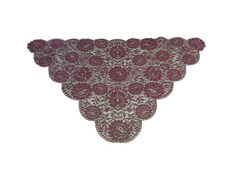
Ref: 115B401BU
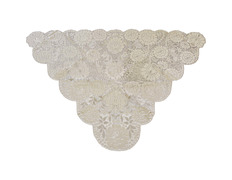
Ref: 115B401BG
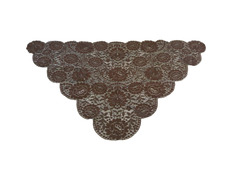
Ref: 115B401MR
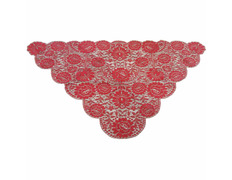
Ref: 115B401R
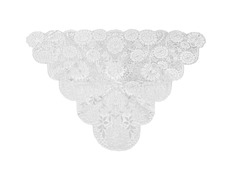
Ref: 115B401B
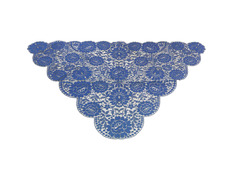
Ref: 115B401AU
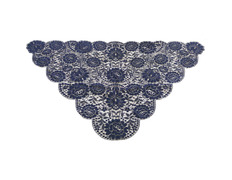
Ref: 115B401AA
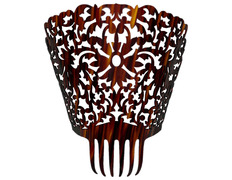
Ref: 115F029
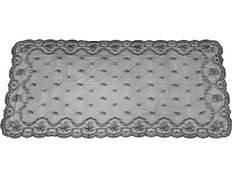
Ref: 115B1002N
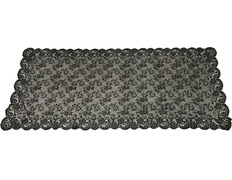
Ref: 115B444N
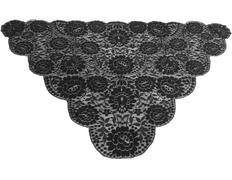
Ref: 115B401N
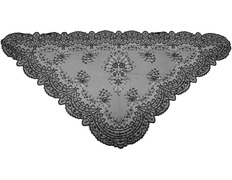
Ref: 115B151N

Ref: 115B211N
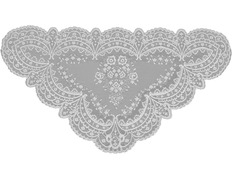
Ref: 115B101P
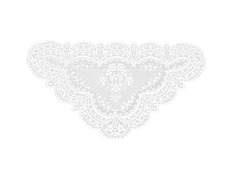
Ref: 115B101B
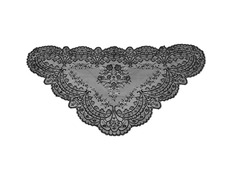
Ref: 115B101N
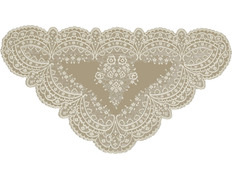
Ref: 115B101BG